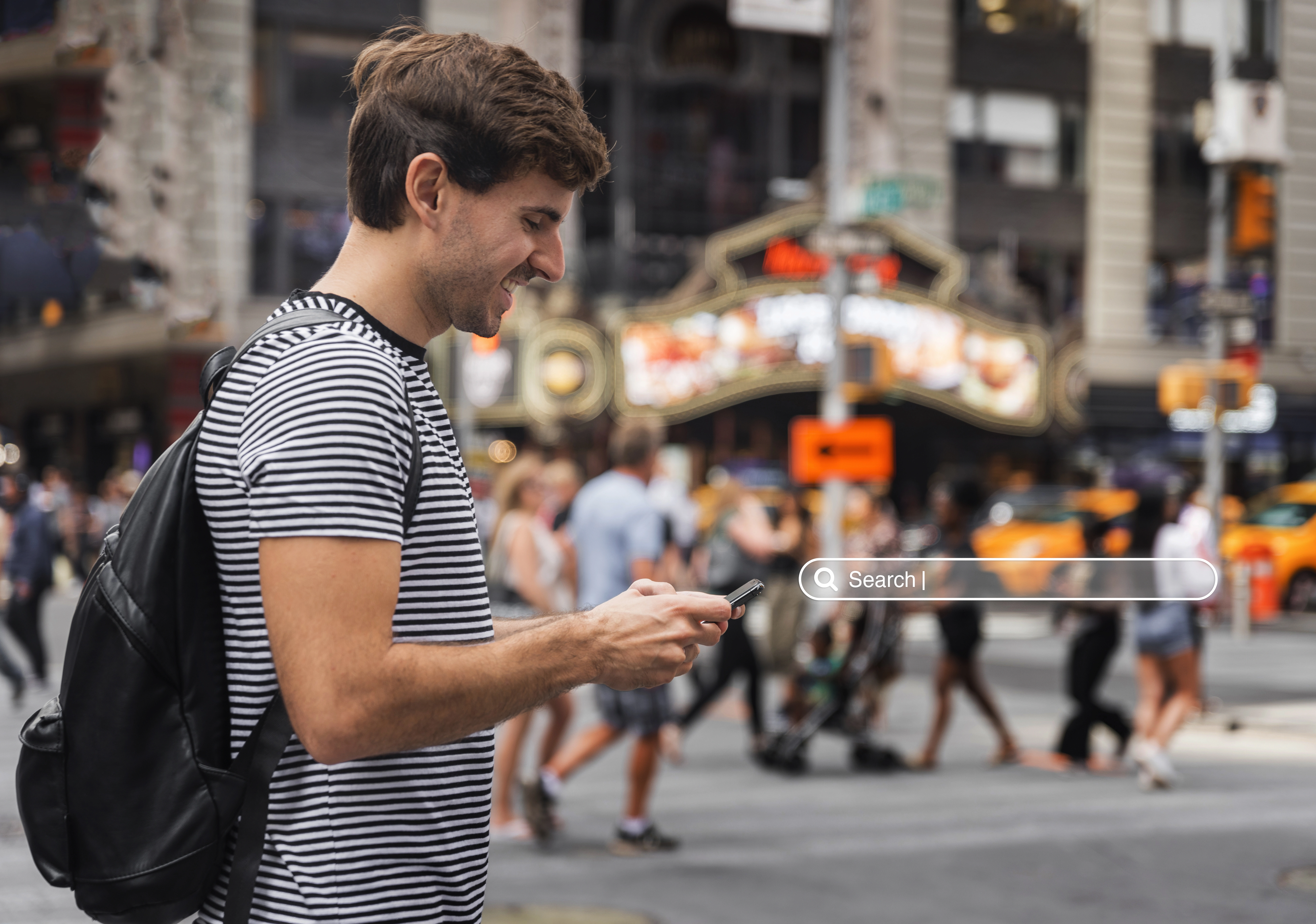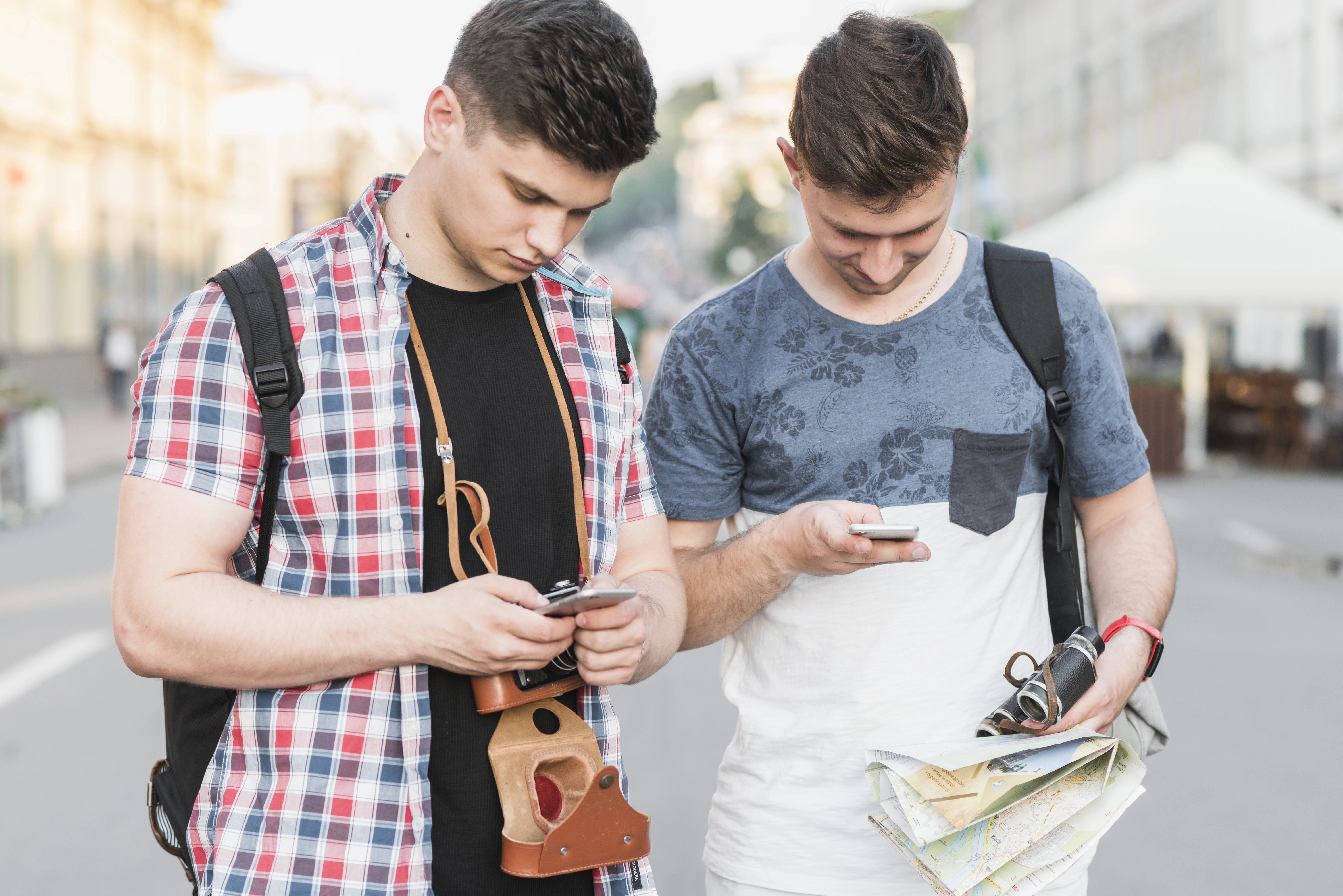How Sports Tourism Is Fueling the Need for Smarter eCommerce Website Design in Chicago
Recently updated on
Chicago and sports go together like deep-dish and lines around the block. And if recent numbers are any indication, the city's appeal isn't slowing down. In 2024, Chicago welcomed 55.3 million visitors, including more than 2 million international tourists, which marked the city's highest numbers since the pandemic. According to Choose Chicago, these visitors generated a record $20.6 billion in economic impact through hotel stays, conventions, and various other activities, as reported by Robert Channick of the Chicago Tribune.
These visitors didn’t just take skyline selfies and catch a glimpse of the lakefront skyline.
Every year, the city becomes a magnet for marathoners, out-of-state superfans, local diehards, and wide-eyed visitors looking to tick Wrigley Field or Soldier Field off their bucket list.
Whether it’s a World Series rematch or the Chicago Marathon turning Lake Shore Drive into a sneaker parade, sports tourism in Chicago is booming. Which is great. Unless you’re a business owner watching web traffic spike, only to realize your website still looks and functions like it's waiting for the 2016 Cubs comeback all over again.
Let’s talk about how the sports tourism surge is forcing businesses to re-evaluate their digital experience—and how thoughtful, strategic eCommerce website design in Chicago can help fix what’s (very obviously) broken.

The All-Too-Common “Wait, You Want Me to Call?” Problem
Sports fans are some of the most loyal—and let’s be honest, gloriously unhinged—people on the planet. They’ll drop hundreds on the latest jersey, hunt down limited-edition bobbleheads, and guard their 1998 Ken Griffey Jr. mint card like it’s a national treasure.
It’s no surprise, then, that sports tourists are extremely online. They’ve got multiple apps open. They’re checking event schedules, reserving tables, price-checking merch, and plotting a 36-hour whirlwind itinerary—all while killing time in a hotel lobby with half a charger left.
And then they land on your website. It wants them to call for availability. Or download a PDF. Or fill out a form that only works in landscape mode.
That’s game over.
Most of the time, they bounce straight to a competitor with a cleaner layout and a checkout flow that doesn’t feel like an obstacle course.
It’s a classic case of good business, bad interface. And no, it’s not always because the company doesn’t care. Sometimes the site was rushed out (“just temporary”), built on a shoestring budget, or duct-taped together between other priorities.
The fix? A more innovative, cleaner eCommerce platform that works the way people shop and plan today. One that connects reservations, product ordering, and customer updates without the digital gymnastics.
Think:
- Live product availability
- Real-time table or tour booking
- Check out in fewer than eight taps—no fine motor skills required
You’d be amazed at what happens to your conversion rates when you stop making people work so hard to give you their money.
It’s 2025. Your Website Should Work on a Phone.
And yet… here we are.
We still come across restaurant sites that throw a tantrum unless you rotate your phone sideways. Merch stores with buttons the size of a breadcrumb. Booking forms that require you to pinch and zoom like you're disarming a bomb under pressure.
Here's the thing: if your website isn’t built for mobile, you’re not just behind—you’re invisible to a big chunk of your audience.
Over 60% of all web traffic now comes from mobile devices. That’s not a fun fact—it’s a warning sign. If your site isn’t fast, responsive, and user-friendly on a phone, it’s actively turning customers away.
For sports tourists, this is especially critical. They're not sitting at home in front of a desktop. They're navigating a new city, checking restaurant availability on the go, placing merch orders between innings, or trying to book a tour while waiting for their Lyft. And they’re doing all of it from their phones.
When your mobile site stutters, lags, or requires Olympic-level finger precision to use, customers leave. Worse, Google notices—mobile-friendliness is a key factor in search rankings now.
Translation: your site’s mobile experience doesn’t just impact user satisfaction—it can also push you further down the search results.
In 2025, mobile-first design will no longer be a trend. It’s table stakes.
To keep up with the way people browse and buy today, your site needs:
- Responsive layouts that adapt to every screen size
- Apple Pay and Google Pay integration for frictionless checkout
- Embedded maps and directions so visitors don’t get lost trying to find you.
- Click-to-call buttons that connect to your business, not to a dead page or your cousin’s old number
If your site still treats mobile like a backup plan, you’re not just leaving money on the table—you’re handing it to the competition.
That’s why, at Imaginary Landscape, we approach every project with a mobile-first eCommerce mindset—especially for Chicago businesses that rely on high-volume foot traffic from fans, tourists, and event-goers who plan everything from their phones.
Not All Fans Are the Same. Your Website Should Know That.
Here’s a difference between a Blackhawks season ticket holder and a college student attending their first Bulls game on a lark. One’s ready to buy vintage gear, the other just wants to know where to park and if nachos are gluten-free.
Yet, most websites offer the same static experience to every visitor. That’s a missed opportunity.
Having an intelligent eCommerce website design in Chicago goes beyond aesthetics—it’s about building websites that respond to your customers’ needs. That adapts. That feels personal.
And personalization isn’t just a nice bonus anymore—it’s an expectation.
According to McKinsey, 71% of consumers expect businesses to deliver personalized interactions, and 76% report feeling frustrated when those expectations aren’t met. That’s a pretty clear message: if your website treats everyone the same, you’re losing both trust and sales.
The takeaway? Generic doesn’t cut it. A site that recognizes returning visitors, tailors content, and adapts to user behavior is no longer optional—it’s essential.
Here’s what a personalized website may look like:
- Geo-targeted product suggestions (e.g., show local pickup options to tourists staying downtown)
- Behavior-based content (e.g., repeat visitors get fan loyalty offers)
- Event-aware banners that guide users toward relevant items or info
Whether it's a tourist looking for same-day pickup or a repeat customer expecting something special, personalization turns clicks into conversions—and fans into loyal buyers.

Your Customers Don’t All Live Here—But They Still Need to Use Your Site
Chicago sports attract a global crowd. Whether it’s the Bank of America Chicago Marathon bringing in runners from 120+ countries or international soccer matches hosted at Soldier Field, your customers are coming from far beyond the CTA’s reach.
We’ve all seen those hot takes of tourists being native enough that it has affected their authentic living.
Which is why local-focused websites can unintentionally exclude visitors. Confusing city slang, poor user experience (UX), or even just English-only interfaces can create friction that loses the sale.
Want to make your site friendlier? It doesn’t take much:
- Language toggle options
- Simplified navigation
- Universal icons (everyone knows what a shopping cart looks like)
- Clear CTA buttons with verbs like “Buy Now” or “Book Here”
This kind of accessible eCommerce website design isn’t flashy. Still, it’s effective, built into every project, whether for a nonprofit, a tour provider, or a storefront keeping up with marathon weekend demand.
Marketing Is Fine. But Fans Trust Fans.
If you’ve ever picked a restaurant because someone on TikTok said the chicken wings slapped, you get it.
Today’s travelers want to see what other fans are doing. They want user-generated content. They want reviews. They want proof that your business is part of the experience, not just another Google result.
Yet, so many websites still resemble digital brochures. Static. Impersonal. Covered in stock photos of smiling families who’ve never set foot in Chicago.
Instead, imagine this:
- A homepage photo carousel pulling real-time Instagram posts using your event hashtag
- Verified customer reviews are displayed next to each product.
- Fan stories or testimonials that tell why your merch, meal, or event made their trip memorable
We’ve implemented features like these for clients across the city. The results? Higher engagement. More trust. More clicks. More sales. It’s not magic—it’s just smart eCommerce website design in Chicago that speaks the same language as your audience.
What to Do If You’re Stuck With “Good Enough”
Let’s say your site works. Mostly. It’s been running for years, gets the job done, and you’re not entirely sure who built it—or how to update it without accidentally unpublishing everything.
That’s fine. We’ve been there. We’ve inherited those projects. We’ve untangled the spaghetti code, modernized the design, added payment processors that don’t require a separate login, and updated platforms that were last touched in a pre-pandemic world.
The point is:
It doesn’t need to be this way.
And if you’re riding the wave of sports tourism in Chicago, it shouldn’t be.
Even minor upgrades, such as switching from a static menu to an order-ahead system or adding real-time inventory to your merchandise page, can significantly boost your bottom line during high-traffic weekends.
Accessibility Isn’t Optional—It’s Foundational
In a city as diverse and globally connected as Chicago, accessibility isn’t just a checkbox—it’s a competitive advantage. Sports tourists come from all walks of life, all levels of digital comfort, and often from outside the U.S. If your website isn’t built to be inclusive, you’re unintentionally shutting the door on visitors who want to engage with your business but can’t—because the interface isn’t intuitive, the language is unclear, or the user journey breaks on older devices or slower connections.
Accessibility in this broader sense means:
- Straightforward, simple navigation that works for any user
- Logical page structure and content flow that guides visitors intuitively
- Flexible, responsive design that adapts to different browsers, devices, and connection speeds
- Interfaces that reduce friction instead of adding it, especially for time-crunched or first-time users
These are not "nice-to-haves" for a sports tourist trying to buy a shirt on the walk to Wrigley, or reserve a table before tip-off—they’re expectations.
As Brian Moloney, President and Chief Executive Officer of Imaginary Landscape, put it best: “Accessibility is not a burden—it’s part of the cost of doing business on the web.” For businesses capitalizing on Chicago’s sports tourism surge, creating a digital experience that works for everyone, regardless of device, skill level, or browsing context, isn’t just inclusive; it's essential.
And that’s not just good design. That’s good business.
Ready for the Next Step? Let’s Talk Strategy.
At Imaginary Landscape, we’ve been building custom eCommerce platforms for Chicago businesses long before “omnichannel” became the buzzword of the month.
We specialize in:
- Mobile-first design
- Smart backend integrations
- Custom dashboards that don’t require a PhD to use
- Reliable performance under high traffic (yes, even postgame surges)
We’ve worked with clients who needed fast fixes and long-term roadmaps. Some came to us with three-week timelines and “temporary” builds that are still up years later. (And no, we’re not bitter. Just prepared.)
If your business touches Chicago’s sports scene—whether you’re a bar near United Center, a hotel in the Loop, or a niche gear shop with Cubs socks and no clear checkout button—your website is now part of the fan experience.
Make it count.
We can help you elevate your digital presence with a site built for real users, in real-time, on real devices. Whether it’s fixing what’s broken or creating something that finally does your business justice, we’re here to help you move forward with purpose, clarity, and a platform that performs. Visit us to learn how we can help you build a site that delivers results—and represents your brand at its best.


 of value from this post, would you please take a sec and share it? It really does help.
of value from this post, would you please take a sec and share it? It really does help.